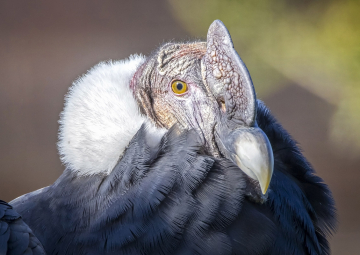GENERAL
The importance of responding to the recall

When we train animals to respond to a specific stimulus, regardless of what they are doing or what situation they are in, to go to a particular location, we know it as recall training.
Basically, the animal, even if it is performing a specific behavior, if the recall is performed it must interrupt what it is doing and go, within a short period of time, to the place that we have foreseen, always depending on the facility and the species.
For example, we decided that the place of recall is a window of the fish house. Therefore, if a sea lion is performing a behavior in the water and is given the recall signal, it must quickly go to that place because that is the final preset position and the only one in which it will be reinforced.
This technique is often not well understood and is always performed in the same circumstances or after a particular event, but this is one of the most common mistakes.
The recall should be seen as a behavior more within the animal’s repertoire and should be used in any situation, in addition to being reinforced preferably with primary reinforcement. To have a high probability of success, it should have a high reinforcement magnitude to create a very positive history.
Why do we train it?
Always using it in the same situation causes the animal to start predicting that, to get reinforcement, they will simply have to perform the behavior that causes the trainer to perform the recall. Like, for example, trainers who do it often in a situation of aggression or when an animal is about to attack another animal or its trainer.
If we use the recall only in this situation, we inform the animal that, to be reinforced, it is enough to threaten, attack another animal or the trainer itself. So through the associative process you learn what you need to do to get reinforcement. But if on the contrary, if it is used when the animal attacks, when it is resting, when it is performing an ultrasound position, when it is in the middle of a demonstration, etc., the associative process will never take place in only that specific situation and it will have a high rate of success.
Many zoological parks, in recent years, have begun to use this technique to move animals in a particular place in their habitat for various purposes such as: handling and veterinary checkouts, spending the night, cleaning their enclosures, removing or putting in enrichment, etc.
How do you train it?
First, we will choose a stimulus that should be something unique; something that does not exist in the animal’s environment. Like a bell, a horn, etc.
We will analyze some very important points that we must take into account before training this behavior.
1. To choose what animals to do this training with. In some situations it may be necessary to do it with the whole group of animals, for example to be kept in an indoor enclosure, and on other occasions with a specific animal, for example to receive veterinary treatment in a specific place.
2. What final station to choose for this behavior. If it is done with several species, evaluate the habitat well and choose where and how it will be reinforced.
3. What kind of stimulus will we use? Visual, audible, tactile?
After evaluating everything, we can move on to the practice.
The recall training process should be done exactly as we did with the bridge; that is, through the association of the stimulus that we chose with a primary reinforcement. By repeating this action several times, what was a neutral stimulus becomes a conditioned stimulus.
Once the animal understands this step, we begin to train the A-B concept. That is, from a point A , which is any point where the animal is, to a point B, which is the final station of the behavior. When the animal is called with the recall, it should not be addressed to the person who has made it, but to the final station that we had chosen for the behavior.
Firstly, as help, we can signal or motivate the animal to move to point B using a technique known as luring or baiting (a technique that uses primary reinforcement to help guide the animal in a desired direction).
In the beginning, we can also choose to adopt the system of doing the session always at the same time of day to create a routine and have a better participation of the animal.
Consistently, and with the use of a large amount of reinforcement, these aids will be reduced until the day when the animal no longer needs them, and at that time, it is important to work on the variability of the circumstance in which we ask the recall, while reminding us that the final position should always be the same.
This behavior is a priority and an integral part of the safety protocols in many zoos and aquariums, because in the event of any kind of incident, the animals can always be kept and moved away from a hypothetical situation of risk.
Here we show you a recall training performed by our colleagues from Seaquarium Le Grau du Roi in France.
{youtube}https://youtu.be/97tbZgZJBCg{/youtube}
As you can see, the recall is a very useful tool that should be a priority in all training programs.
And remember, if it’s possible… WeZooit!


















